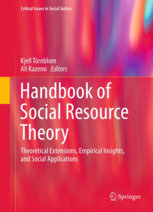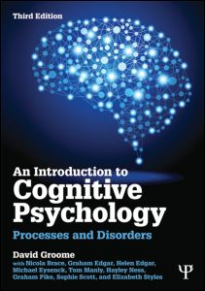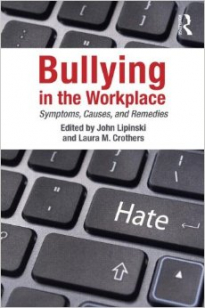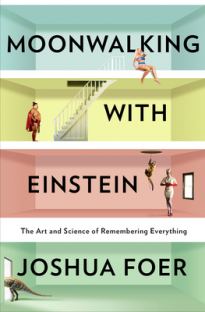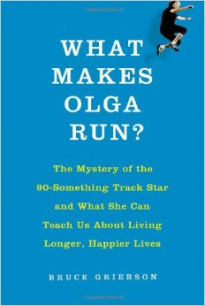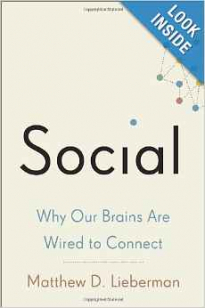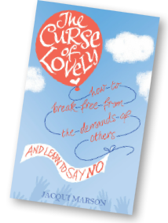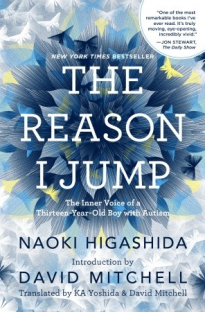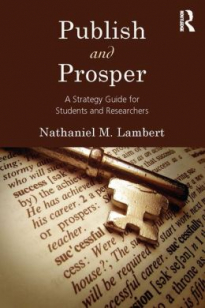Handbook of Social Resource Theory: Theoretical Extensions, Empirical Insights, and Social Applications
Review by: Celina KacperskiThe "Handbook of Social Resource Theory: Theoretical Extensions, Empirical Insights, and Social Applications", put together by Kjell Törnblom and Ali Kazemi, presents a wonderful selection of scholarly articles on the topic of Resource Theory, including much cutting-edge research by distinguished scientists. It is the successful attempt to provide an overview and reference volume for individuals who might be interested in uncovering the patterns behind human interactions and exchanges. moreoverall
novelty
readability
An Introduction to Cognitive Psychology. Proccesses and Disorders
Review by: Irena DomachowskaWhen I started incorporating cognitive paradigms into my research, I was looking for a book that would allow me to quickly navigate through cognitive theories and refresh my knowledge acquired in undergraduate cognitive psychology course. I was glad to find ”An Introduction to Cognitive Psychology” edited by David Groome and colleagues. moreoverall
novelty
readability
Bullying in the workplace
Review by: Richard SkaffOrganization-motivated aggression like retaliatory behavior and antisocial conduct designed to harass, ostracize, humiliate (verbally and non-verbally), and eliminate any employee who is perceived to have ethical standards or raises an ethical concern that might become a problem for management could be classified as a bullying behavior. Human resources departments are designed to protect management and can easily be drawn into becoming the “Bully” who is hiding behind his or her legal jargon in order to lynch and attack targeted employees. moreoverall
novelty
readability
Moonwalking with Einstein: the art and science of remembering everything.
Review by: Carina GiesenIn an attempt to find “the world’s smartest person”, Foer ends up as a visitor at the USA Memory Championship whose contestants easily memorize 250 random digits in under five minutes and are able to learn the order of a shuffled card deck in less than two. However, when Foer asks some of the contestants about their “savant skills”, all of them point out that their memory is in fact “quite average” and that their superior performance is the product of “simple” memory training techniques – which can be learned by anyone. Fuelled by this, Foer starts his own Ebbinghausian self-experiment when he decides to become a “mental athlete” himself. Coached by one of the contestants, Foer begins to train his memory to take part in the oncoming USA Memory Championship. moreoverall
novelty
readability
What makes Olga run?: The mystery of the 90-something track star and what she can teach us about living longer, happier lives.
Review by: Pelin KesebirWhat Makes Olga Run is an engaging, informative and inspiring read about the international track star Olga Kotelko. At the time of the writing of the book, Olga was holding 26 world records, and had over 600 medals won at throwing, sprint, and jump events. This is quite impressive, but here is where things get really interesting: Olga is 95 years old currently, and she has taken up track-and-field at the age of 77! When award-winning Canadian writer Bruce Grierson met the astonishingly young-looking Olga a couple years ago, he had the same question that Olga awakens in many: “Seriously: When you’re breaking records, rather than hips, at an age most people will never live to see … what gives?” At his physical and mental nadir at that point in his life, Grierson decided to follow Olga and learn from her as much as possible about living healthier and happier, longer and better. The result is this book, which perfectly blends Olga’s life story with the latest on the science of optimal aging. moreoverall
novelty
readability
Social: why our brains are wired to connect.
Review by: Suzanne OosterwijkHumans have large brains. According to the social brain hypothesis, proposed by Robin Dunbar, the social environment played a large role in the evolution of the human brain’s structure and function. Today, typing “the social brain” in google scholar results in more than 10.000 hits. More than half of those hits refer to papers or books published since 2010. Conclusion: the social brain is a “hot” term in psychology. In his book “Social: Why our brains are wired to connect” Matthew Lieberman outlines his view on why we have a social brain, and how our social brain processes the world around us. Applying his view more broadly, he also explains what having a social brain may mean in dealing with social issues such as education, work and building social connections. moreoverall
novelty
readability
The curse of lovely: How to break free from the demands of others and learn to say no
Review by: Irena DomachowskaReading a self-help book is like talking to a stranger in a bar – you either identify with the person’s story immediately and feel like you can talk the whole night or you don’t, which is when you try to move to another table. Regarding Jacqui Marson’s book “The Curse of Lovely” I felt similar. After reading the first chapter I couldn’t fully identify myself with the author’s personal story so I was tempted to classify the book as “not for me”. And as can happen in a bar, when a person you didn’t like at first becomes a friend, my first impression of “The Curse of Lovely” turned out to be wrong after I continued reading it for a while. I found myself identifying with the problems and nodding approvingly more and more often. moreoverall
novelty
readability
The reason I jump: The inner voice of a thirteen-year-old boy with autism by Naoki Higashida
Review by: Jens HellmannThe concept of this book The Reason I Jump: The inner voice of a thirteen-year-old boy with autism by Naoki Higashida is based on a fascinating idea. A 13-year-old boy with autism answers questions about his inner life that the outer world wants to know to understand autism better. The book was first published in Japanese in 2007, and translated into English in 2013. moreoverall
novelty
readability
Publish and prosper: a strategy guide for students and researchers
Review by: Helen BoucherIf you are a graduate student just starting your academic career or a relatively new assistant professor, I highly recommend Nathaniel Lambert’s Publish and prosper: A strategy guide for students and researchers. This is a highly readable – I read it in a single day, and I am a slow reader – accessible, and engaging book in which Lambert offers valuable strategies for enhancing your research productivity. moreoverall
novelty
readability

